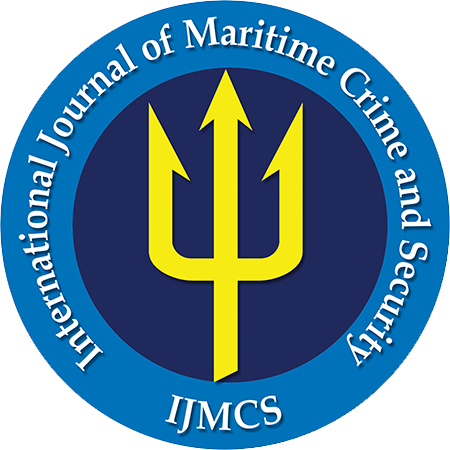Fuzzy Set Theory; Petrochemical Seaports and Offshore Terminals; Security Risk Management; Security Threat Analysis; Security Vulnerability Analysis; Sultanate of Oman.
Nowadays, the pressure for enhanced attention to critical infrastructure security and the focused concern on threats emanating from both domestic and foreign terrorist groups have fostered new challenges for Petrochemical Seaports and Offshore Terminals (PSOTs). These tendencies dictate to maintain comprehensive security regimens that can be integrated with national and international strategies to support the country’s security against terrorism. Therefore, the need for a Security Risk Management (SRM) programme will be an essential part of the business of running a seaport particularly if the addressed port or terminal is handling hazardous chemicals produced from a nearby plant or refinery for export purposes. As a result, by the use of a case study in this paper, the identified security risk factors for an offshore Single Point Mooring (SPM) terminal located inshore side of the seaport of Mina al Fahal in Sultanate of Oman will be assessed by introducing its designated Security Risk Factor Table (SRFT) in order to examine the vulnerability of the addressed terminal. Consequently, the proposed framework can be used by intelligence analysts or port security and risk managers for the protection of these critical infrastructures. Suitable mitigation measures and further treatments for lessening the impact of a successful terrorist attack or potential likelihood of other threats in PSOTs facilities will be studied carefully.
Download Full Text Here
- ABS (2003), American Bureau Shipping. A guide for risk evaluations for the classification of marine-related facilities. Available at:
- https://ww2.eagle.org/content/dam/eagle/rules-and guides/current/other/117_riskevalforclassofmarinerelatedfacilities/pub117_riskeval.pdf. Accessed on:
- 08.01.2019.
- Anoop, M. B.; Balaji, R. K. and Gopalakrishnan, S. (2006), Conversion of probabilistic information into fuzzy sets for engineering decision analysis. Computers and Structures. 84, pp:141–155.
- API (2013), American Petroleum Institute. Security Risk Assessment Methodology for the Petroleum and Petrochemical Industries. ANSI/API STD 780. Available At:
- https://standards.globalspec.com/std/1603209/ansi-api-std-780.Accessed on: 15.12.2019.
- API (2005), American Petroleum Institute. Security Guidelines for the Petroleum industry, Washington, DC, third edition, 2005. Available at:
- https://www.nj.gov/dep/enforcement/security/downloads/API%20Security%20Guidance%203rd%20Edition.pdf.Accessed on: 08.01.2019.
- Argenti, F.; Landucci, G.; Cozzani, V. and Reniers, G. (2017), A study on the performance assessment of anti-terrorism physical protection systems in chemical plants. Safety Science.94: 181–196.
- Bajpai, S. and Gupta, J.P. (2005), Site security for chemical process industries, L. Loss Prev. Process. Ind. 18, pp: 301-309.
- Baybutt, P. (2017), Issues for security risk assessment in the process industries. Journal of LossPrevention in the Process Industries.49: 509-518.
- Borodzicz, E.P. (2005), Risk, Crisis and Security Management. ISBN: 9780470867044.
- CNN (2019) Cable News Network Report. Available at:
- https://edition.cnn.com/2019/07/30/middleeast/yemen-market-explosion-saada-intl/index.html. Accessed on 19, October 2019.
- CSC (2018, Chemical-Safety.Com Available at: www. Accessed on: 20.11.2018.
- HS (2012), Homeland Security. Chemical Sector Security Awareness Guide. A Guide for Owners, Operators, and Chemical Supply Chain Professionals. Available At:
- https://www.dhs.gov/sites/default/files/publications/DHS-Chemical-Sector-Security-Guide-Sept-2012-508.pdf. Accessed on: 15.12.2019.
- ICS (2015), Institute of Chartered Shipbrokers, UK. Port and Terminal Operations and Management. ISBN: 978-1-908833-63-1.
- IMO (2011), International Maritime Organization. Measures to enhance maritime security. Maritime Security Manual – Guidance for port facilities, ports, and ships. Maritime Safety Committee. Available at: http://portalcip.org/wp-content/uploads/2017/05/Guide-to-Maritime-Security-and-the-ISPS-Code-2012.pdf. Accessed on: 15.12.2019.
- Kahraman, C. (2001), Capital budgeting techniques using discounted fuzzy cash flows. In: Ruan, D.; Kacprzyk, J. and Fedrizzi, M., Editors, Soft Computing for Risk valuation and Management: Applications in Technology, Environment and Finance, Physica- Verlag, Heidelberg, pp: 375–396.
- Kamien, D.G. (2012), Homeland Security Handbook. The McGraw-Hill companies. ISBN: 9780071790840.
- Landucci, G.; Argenti, F.; Cozzani, V, and Reniersc, G. (2017), Assessment of attack likelihood to support security risk assessment studies for chemical facilities. Process Safety and Environmental Protection.110: 102–114.
- Marco, E.G.V.C. (2018). The likelihood interpretation as the foundation of fuzzy set theory. International Journal of Approximate Reasoning. 90:333–340.
- Marszal, E. and Scharpf, E. (2002), Safety Integrity Level Selection – Systematic Methods Including Layer of Protection Analysis. The Instrumentation, Systems and Society (ISA). Research Triangle Park, NC.
- Matteini, A.; Argenti, F.; Salzano, E. and Cozzani, V. (2018), A comparative analysis of security risk assessment methodologies for the chemical industry. Reliability Engineering and System Safety, pp:1-17.
- MCS (2019), Ministry of Central Services. Security risk assessment matrix. Government of Saskatchewan, Canada. Available at: https://taskroom.sp.saskatchewan.ca/Documents/Threat-Risk-Assessment-Template.pdf. Accessed on: 15.12.2019.
- Mokhtari, K. (2020), RISK MANAGEMENT - A Guideline for QHSES and Risk Managers in marine ports and offshore terminals. LAMBERT Academic Publishing in Germany; March 2020. ISBN: 9786202515603.
- Morenoa, V. C.; Reniers, G.; Salzanoa, E, and Cozzani, V. (2018), Analysis of physical and cyber security-related events in the chemical and process industry. Process Safety and Environmental Protection.116: 621–631.
- Nolan, D.P. (2014), Safety and security review for the process industries. Application of HAZOP, PHA and What-If Reviews. 4th Edition. ISBN: 9780323322959.
- OCIMF (2012), Oil Companies International Marine Forum. Marine Terminal Management and Self-Assessment (MTMSA). First Edition. Steamship international. ISBN: 9781856095501. Witherby publishing.
- Ross, T. J. (2017), Fuzzy logic with engineering applications. Wiley publication. 4th Edition. ISBN: 9781119235866.
- Rubin, B. and Cutter, S. L. (2019), US Emergency Management in the 21st Century: From Disaster to Catastrophe. ISBN: 978-1138354654.
- Sugeno, M. (1999), Fuzzy Modelling and Control, CRC press, Florida, USA.
- Sutton, I. (2014), Process risk and reliability management. Operational integrity management. 2nd Edition. Published by Elsevier Inc. ISBN: 9780128016534.
- WPS (2019), World Port Source. Available at:
- http://www.worldportsource.com/ports/OMN_Port_of_Mina_al_Fahal_2305.php. Accessed on: 18.12.2019.
- Yang, T. and Hung, C. C. (2007), Multiple-attribute decision-making methods for plant layout design problem, Robotics and Computer-integrated manufacturing. 23, pp: 126–137.
- Yazdi, M. (2018). An extension of the fuzzy improved risk graph and fuzzy analytical hierarchy process for determination of chemical complex safety integrity levels. International Journal of Occupational Safety and Ergonomics.25(4), pp: 551-561.
- Zadeh, L. A. (1965), Fuzzy sets. Information and Control. 8, pp: 338–353.




